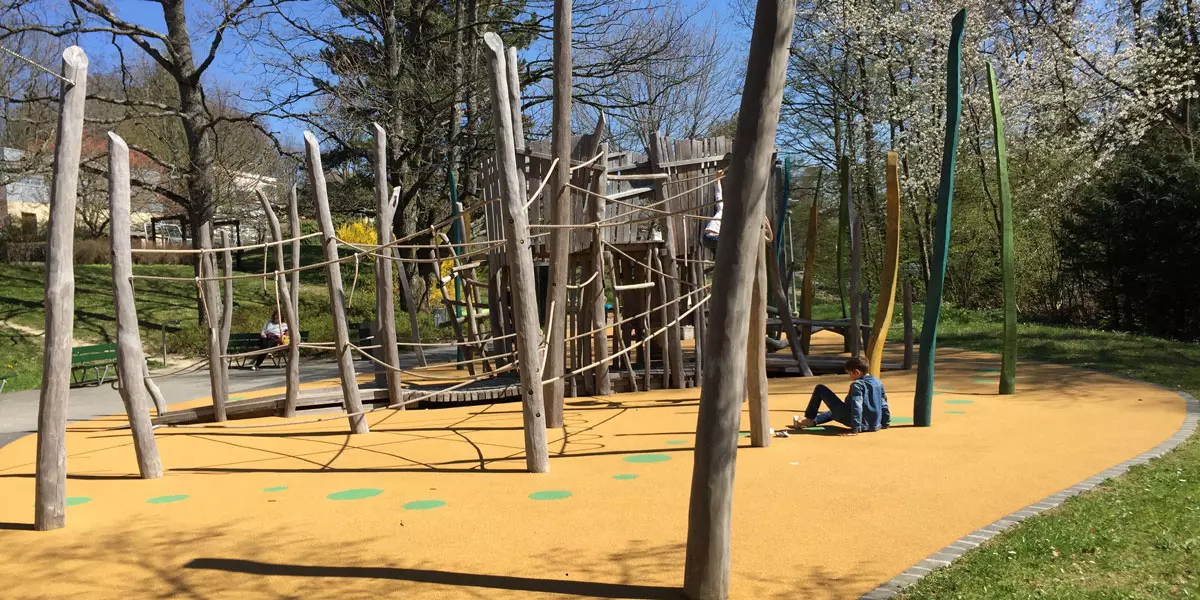On Swiss playgrounds, barrier-free does not mean inclusive
In the “Playground: a meeting place for all?” project, researchers from the Institute of Occupational Therapy investigated children’s experiences in playgrounds that were designed for children both with and without disabilities.

Even if playgrounds are designed in a barrier-free manner, this does not necessarily mean that they are also inclusive. This was the most important finding of the study headed by Christina Schulze. Playing is key for children. It serves to promote not only their physical, but also their mental, psychological and social development. When children play outside, it is most often on playgrounds. However, most playgrounds in Switzerland are only designed to meet the needs of children who are in good health both physically and cognitively. This is not the case for the approximately 40 playgrounds in Switzerland that have been built with the support of the “Denk an mich” (“Think of me”) foundation, which are barrier-free and make it possible for children with and without disabilities to share learning experiences.
Six of these special playgrounds were the focus of the “Playground: a meeting place for all?” study. Christina Schulze and Ines Wenger from the ZHAW Institute of Occupational Therapy assessed these using a checklist, asked children about their experiences of using the playgrounds and observed them at play. Almost half of the children surveyed had a physical and/or cognitive disability.
Adults underestimate the playing abilities of children
One finding that the researchers made was that the perception of the adults with respect to the activities of the children did not necessarily agree with that of the children themselves. Children with a physical disability also talked about climbing, for example, when they were pulling themselves up with their arms on playground equipment. The results also showed that all children felt they were able to perform various activities on the playground. Barrier-free playgrounds can thus boost the self-confidence of all children.
Hardly any interaction between the children
The observation that there was hardly any social interaction on the six playgrounds between children with and without disabilities was less positive. Both groups of children appeared – based on their abilities – to distance themselves from the other one. This was also seen in their comments. An eleven-year-old boy with a physical disability, for example, said: “I don't want to play football with children who can run around as they are quicker than children in wheelchairs”. At the same time, children with disabilities expressed the wish to make friends with the other children. However, they seemed to lack the strategies required to put this into practice. One reason for this could be the fact that the children interviewed hardly knew one other because they, for example, went to different schools.
Little experts
A further finding was that children with disabilities are not only very conscious of their own needs, but also of those of children with other limitations. Some made reference during the interviews to sometimes smaller aspects that significantly influence the usability of the playground for themselves and other children. These include, for example, the availability of handrails or wider entrances and exits for slides. “This ‘inclusive view’ of children with disabilities should definitely be taken into account during the planning and designing of barrier-free playgrounds,” says Christina Schulze.
Insights for specialists
With a view to occupational therapy, the authors also emphasise that the play behaviour of children should be assessed outside more and in the context of their social environment, instead of in an isolated fashion in the practice. Furthermore, occupational therapists could make active use of their specialist knowledge at a political and municipal level to promote the improvement of playgrounds and thus the rights of their clients.
The results summarised here appeared in the Scandinavian Journal of Occupational Therapy in an article entitled “Children’s perception of playing on inclusive playgrounds: A qualitative study”. However, the results of the second part of the study “Playground: a meeting place for all?” have not yet appeared. In the study, the ZHAW researchers surveyed specialists involved in the designing of playgrounds. The results of the focus groups will be published during the course of 2021.
Contact
Prof. Christina Schulze, Project Manager, Lecturer at the Occupational Therapy Research Unit, christina.schulze@zhaw.ch, +41 (0) 58 934 63 83